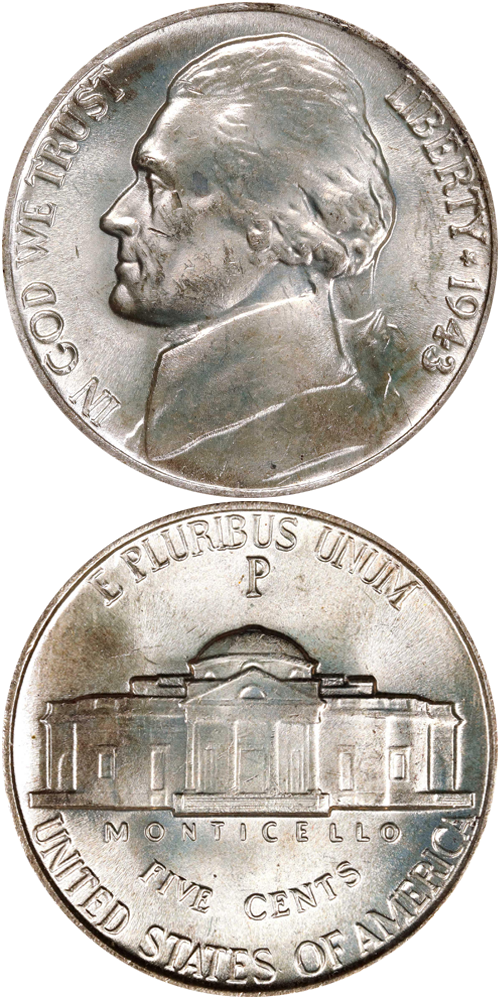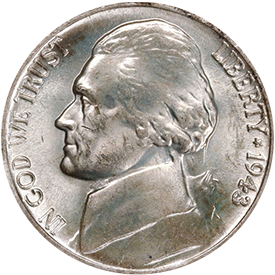Designed by: Felix O. Schlag
Issue Dates: 1942-1945
Composition: 56% copper, 35% silver, 9% manganese
Diameter: 21.2 mm
Weight: 5.00 grams (77.16 grains)
Edge: Plain
Business Strike Mintage: 869,896,100
The so-called "wartime" alloy represents a World War II measure to eliminate the use of nickel, a strategic material, in coinage. The former composition of 0.75 part copper and 0.25 nickel was changed to 0.56 part copper, 0.35 part silver, and 0.9 part manganese. To differentiate the new alloy and to aid in later redemption and sorting by metallic content of these pieces by the Treasury Department, the wartime pieces were made with a large mintmark above the dome of Monticello. The Philadelphia Mint, which had never used a mintmark earlier, was represented by a P, while Denver and San Francisco were represented by D and S respectively.
I believe it was Philadelphia dealer Harry Forman who first called these "wartime" issues. In recent decades they have been popularly collected as a distinct set. Business strikes are readily available in grades from Very Good to superb Uncirculated. Worn pieces are apt to have a rather scruffy appearance, so the acquisition of an Uncirculated (or Proof) piece is recommended. Uncirculated coins are usually sharply struck. In 1942, 27,600 Proofs were made of the wartime alloy at the Philadelphia Mint, each coin being distinguished by a P above the dome. These pieces are readily available today, although the demand for them by type collectors has caused the price to rise sharply in recent decades.
Full Steps
The steps on Jefferson’s home of Monticello on the reverse are often not fully struck, and if the five steps beneath the columns are all visible and distinctly separated, then the designation “FS” or Full Steps is given. Note that if a mark or small scratch interrupts the lines, then the coin will fail to qualify. (See the second photo from left.)








